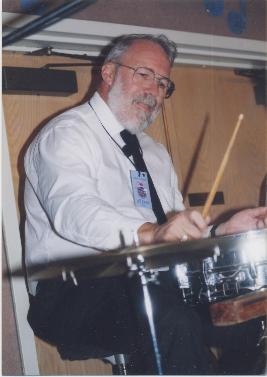Whither Traditional Jazz? Part Two
by Bert Thompson
The lack of participation in traditional jazz activities by the younger generation has also been
addressed by some festivals. The Sacramento festival, along with others, has for many years
had a “youth band” roster and schedule, and sponsored a “youth jazz camp.” I have stopped in
occasionally to hear some of these bands at the festivals, and the small audience has consisted
for the most part of relatives of the musicians. Where were the musicians’ peers (even when
admission was free)? Had these youth bands been playing one of the several varieties of rock,
the place would probably have been packed with the young. And again, where are the
members of these bands several years hence?
So these “solutions” have only been marginally successful. What else could be done?
While music programs in the schools have suffered severe budget cuts over the last several
decades, one might think that those that still exist could provide an avenue for exposing
youngsters to some traditional jazz. On examination, we can see such is seldom the case. Too
many music teachers have little or no knowledge of or acquaintance with traditional jazz and so
they do not include it in their curricula. Jazz, they seem to believe, began with Charlie Parker,
Miles Davis, et al. The result is that traditional jazz is not presented to the students at all and,
as a result, no value is placed upon it, other than what a musical mentor of a youth band outside
the school provides. And it follows there is little chance of the students trying to form their
own jazz bands.
Now thankfully there are exceptions, perhaps the most notable being Wynton Marsalis, who
constantly stresses the need to be versed in the early forms of jazz, regardless of which kind
one opts for later, and who embodies it in his own teaching. And there are a few other music
teachers who do likewise, so perhaps that vicious circle of “teacher-not-teaching-about-early-
jazz-to-those-who-in-turn-become-teachers-not-teaching-about-early-jazz-to-those-who-in-turn
…” can be and is being broken.
Another suggestion for increasing the exposure of the young to traditional jazz, which has also
been proposed by other musicians, is to have adult bands perform for high school assemblies
and such. If young people don’t hear the music in the classroom or on radio and TV, how and
where are they to hear it?
Two difficulties in achieving this might be that first, prejudice against or ignorance of early
forms or styles of jazz on the part of music teachers (as mentioned above) must be overcome so
that they are more likely to include it in their curricula and endorse its performance in such
assemblies. Second, bands must be available and willing to perform at such events.
Day gigs and the need for compensation are impediments to such a consummation. If a band
consists of members (or can get subs) who are, like me, retired from a day job, the first
problem, availability, might be solved. The second, compensation, is a bit thornier. A band of
avocational players may donate their services, but one which consists of full-time professional
union members obviously needs to be paid—the musicians’ livelihoods depend on it. Perhaps
AFM music performance trust funds could help out, or a corporate sponsor or two, such as See’s
Candy, could be found willing to underwrite the performance. And amazingly enough I have
heard of some schools actually having some funding to defray such kinds of expenses! If none
of these sources are available, perhaps the band could put on a clinic and then an evening
concert to which parents, friends, alumni, etc., would buy tickets, and if their progeny who
participated in the clinic were given a chance to “sit in” with the professional band for a couple
of numbers during that program, probably ticket sales would be increased.
Part 2 - To be continued
|
|





